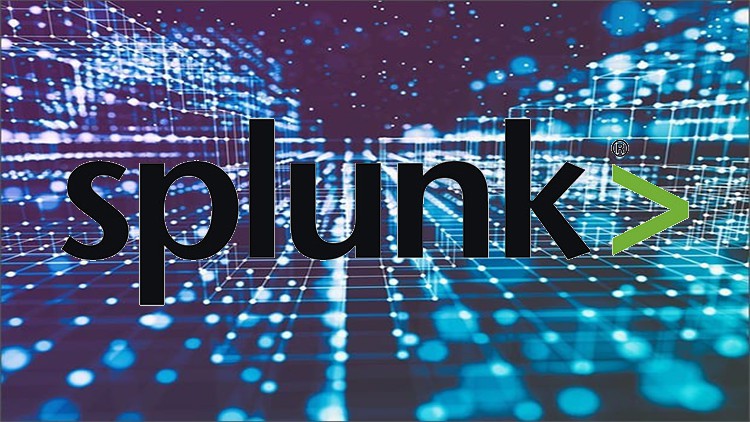
best practice Tests for Splunk Developer Certification 2021
What you will learn
Practice Tests for Splunk Developer Certification
Practice tips for Splunk Developer Certification
Practice same Exam for Splunk Developer Certification
Discover all tricks in exam certification
Description
The Splunk Certified Developer exam is the final step towards completion of the
Splunk Certified Developer certification. This highly technical certification
behaviors and visualizations, building apps using the Splunk Web Framework, and REST endpoints.
minutes. It is recommended that candidates for this certification complete the lecture, hands-on labs,
and quizzes that are part of the Creating Dashboards with Splunk, Advanced Dashboards &
Visualizations, Building Splunk Apps, and Developing with Splunk’s REST API courses in order to be
prepared for the certification exam. The prerequisite exams for this certification are Splunk Core
Certified Power User and Splunk Enterprise Certified Admin.
The following content areas are general guidelines for the content to be included on the exam.
● Prototyping
● Using tokens
● Improving performance
● Customizing views
● Using event handlers
● Adding simple XML extensions
● Introduction to Splunk apps
● Planning app development
● Adding data
● Creating apps
● Creating SplunkJS views
● Creating a KV store
● Using the Splunk REST API
● Packaging apps
● Calling Splunk REST endpoints with curl
● Embedding calls to REST endpoints
The following topics are general guidelines for the content likely to be included on the exam; however,
other related topics may also appear on any specific delivery of the exam. In order to better reflect the
this course cover these topics
1.0 Use Forms 5%
1.1 Explain how tokens work
1.2 Define types of token filters
2.0 Improve Performance 5%
2.1 Use the tstats command
2.2 Use global searches
3.0 Customize Dashboards 5%
3.1 Customize panel link buttons
3.2 Set panel refresh and delay times
4.0 Use Event Handlers 5%
4.1 Identify types of event handlers
4.2 Describe event actions
5.0 Add Drilldowns 5%
5.1 Define types of drilldowns
5.2 Identify predefined tokens
6.0 Add Advanced Visualizations & Behaviors 5%
6.1 Describe simple XML extensions
6.2 Describe Splunk Custom Visualizations
7.0 Planning App Development 10%
7.1 Describe ways to monitor app performance
7.2 Identify useful Splunk log files
7.3 Describe security best practices
8.0 Creating Apps 5%
8.1 Define the app directory structure
8.2 Describe app permissions
9.0 Adding Data 5%
9.1 List types of data inputs
9.2 Describe add-ons
10.0 Creating a KV Store 5%
10.1 Define what is a KV Store
10.2 Describe KV Store lookup
10.3 Create a KV Store collection
10.4 Search a KV Store collection
10.5 Update content in a KV Store collection
10.6 Delete a KV Store collection
11.0 Packaging Apps 5%
11.1 Describe the difference between local and default directories
12.0 Introduction to the Splunk REST API 5%
12.1 Describe the REST URI format
12.2 Identify which Splunk server to connect to (e.g., search head, indexer, forwarder)
12.3 Identify where REST logging occurs
12.4 Describe authentication methods
13.0 Namespaces and Object Management 10%
13.1 Describe namespaces and why they matter
13.2 Describe how the servicesNS is used with namespaces and REST endpoints
13.3 Describe access control lists
13.4 Update access control lists
14.0 Parsing REST Output 5%
14.1. Describe how the Splunk REST API uses Atom Syndication
14.2. Describe the entry element
14.3. Describe the content element
14.4. Describe how to control the output format
15.0 Searching 10%
15.1 Describe the importance of specifying fields in a search
15.2 Describe options for specifying a search time range
15.3 Describe blocking, oneshot, normal, and export searches
15.4 Describe search jobs
15.5 Create and manage search jobs
15.6 Describe ways to improve search performance
16.0 Writing Data to Splunk 10%
16.1. Identify some options that are available when creating an index
16.2. Create and manage indexes
16.3. Describe the Splunk HTTP Event Collector (HEC)
16.4. Describe HEC tokens and how they are used
16.5. Describe indexer acknowledgement
16.6. Create and use HEC tokens to get data into Splunk